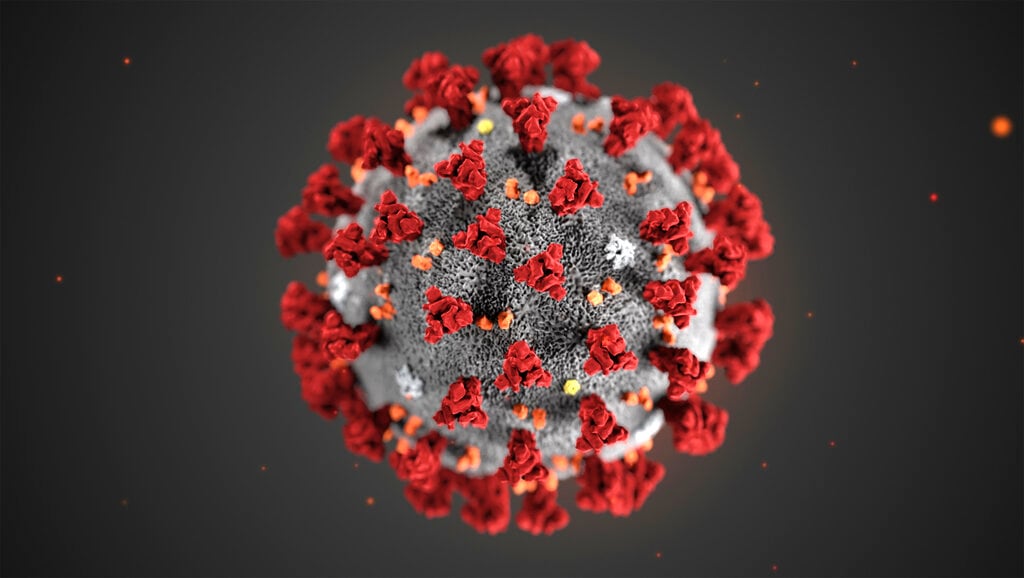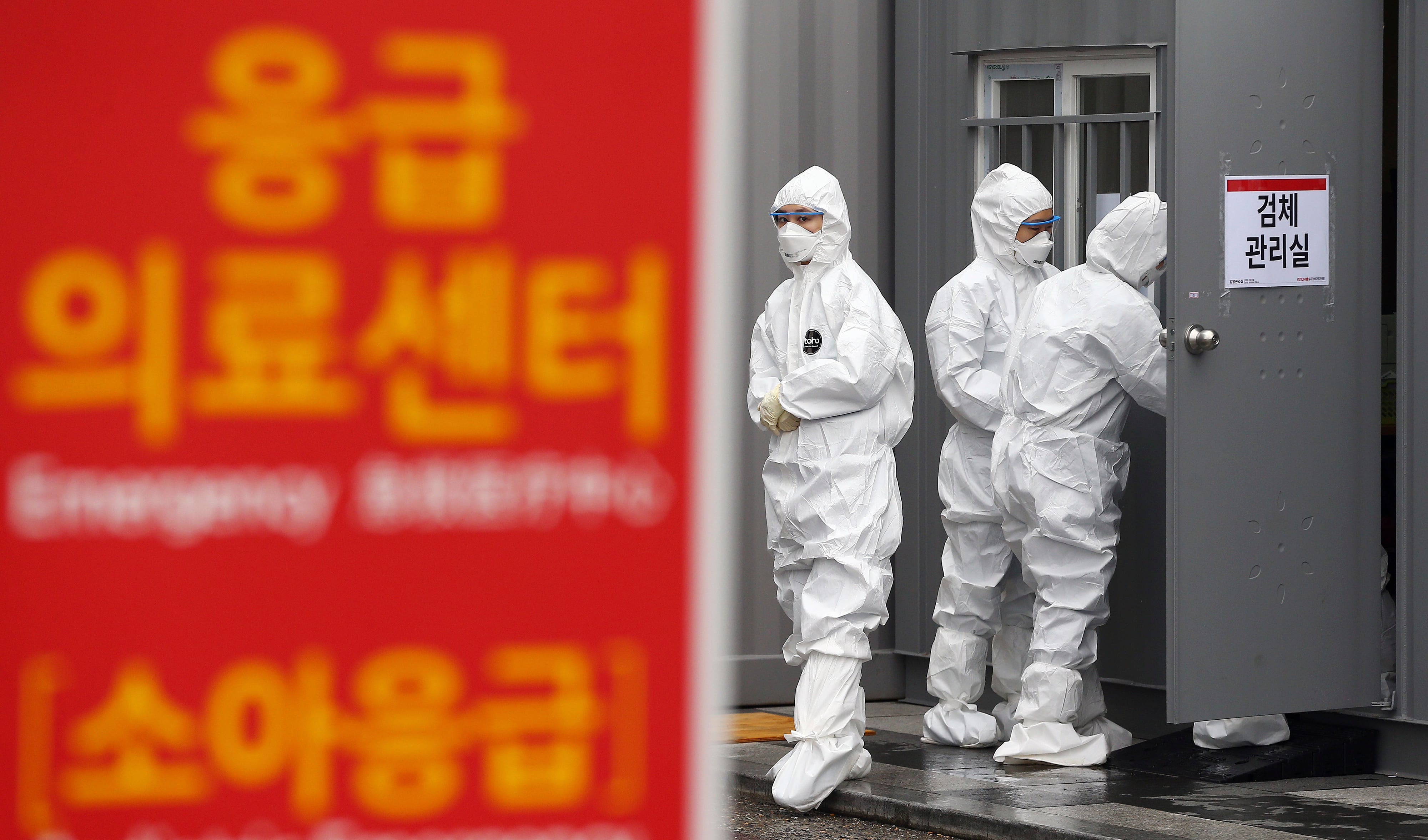It’s been all hands on deck since Jan. 10 at the Walter Reed Army Institute of Research, WRAIR, working to develop a vaccine against the COVID-19 coronavirus, now responsible for 91,000 illnesses and at least 3,000 deaths worldwide.
The date marks the first publication of the virus’s genetic makeup — its sequence — which gave scientists a better understanding of its makeup and how it causes a potentially deadly disease.
At WRAIR, Dr. Kayvon Modjarrad, the institute’s director for emerging infectious diseases, immediately put his team to work, ordering materials needed to develop the design for a potential vaccine and prepare for testing it, starting with mice.
“We have been working on this since the beginning of the outbreak. If we hadn’t done that, we’d be a month behind,” Modjarrad said Wednesday during an interview with Military Times.
For more than six weeks, WRAIR and U.S. Army Medical Research and Development Command personnel have been working on research efforts to control, contain and prevent the virus, to include developing a new diagnostic test.
RELATED

Modjarrad and Dr. Sheila Peel, director of WRAIR’s diagnostics and countermeasures branch, said that with large numbers of troops living in close quarters, as well as the illness’s potential impact on readiness, the Defense Department must have rapid test kits and a potential vaccine in the pipeline.
When the virus was first confirmed in the U.S. on Jan. 31, the Center for Disease Control and Prevention’s procedures called for individuals to be tested on site and the results sent to CDC for interpretation. In early February, the CDC began shipping tests to state health labs to run their own results, but many of those tests failed, resulting in false negatives.
On Saturday, the Food and Drug Administration announced a policy to allow academic hospitals and approved research labs to develop their own tests for COVID-19.
The idea, Peel said, is to develop a test that will quickly determine whether someone has the virus and needs to be isolated and treated, or if they simply have a cold.
“Some of the current versions of the test are actually pretty low throughput. In other words, you can’t test very many specimens in the day,” she said. “Diagnostic testing is actually a sorting problem. You need to classify who is affected and who is not. The lab’s job is to do that quickly and accurately. And right now, you can test accurately but you certainly can’t test quickly.”
Both WRAIR and the Department of Veterans Affairs are developing diagnostic tests.
Peel couldn’t say how long it will take the Pentagon to have a rapid diagnostic test, but with academic centers, university medical centers, the VA and DoD all working on the problem, they should be able to “build considerable test capacity for the United States.”
“This is not specifically a DoD version … the department has compelling reasons to partner with industry to advance diagnostic test for service members … we have many deployed forces that live in congregant setting at risk of infection. We need means to test on large number of people very rapidly,” Peel said.

WRAIR is uniquely positioned to develop diagnostics, as well as preventives, for the virus. The 100-year old organization, named for the Army physician who linked yellow fever to mosquitoes, has spent years studying malaria, Ebola, Zika and other viruses, working to develop preventive medications, treatments and vaccines against these and other diseases.
To develop a COVID-19 vaccine, the WRAIR team is relying heavily on existing research on Middle East Respiratory Syndrome virus, or MERS, a particularly nasty coronavirus form that kills roughly one-third of its victims.
The COVID-19 vaccine currently under development by WRAIR is known as a protein vaccine, which targets a portion of the virus — the little nubs seen in portrayals of the virus — that allows it to attach to the lungs of a human host.
WRAIR researchers are also determining what type of booster, or adjuvant, will work best with the vaccine to improve effectiveness.
Testing is currently underway in mice, according to Modjarrad.
“We want to be absolutely sure that this gives us an appropriate immune response,” he said.
How long until a vaccine is available is unknown. Modjarrad said clinical trials using humans must be undertaken and then, if it works, the Department of Defense would need to contract with a commercial entity to manufacture it.
RELATED

While it would be nice to have a vaccine now, the goal is to get through the initial phase of the study in anticipation of having a vaccine ready for additional studies next winter, should COVID-19 become a seasonal illness like the flu, he said.
“We have to be prepared for the possibility that it becomes more like an endemic seasonal disease," Modjarrad said. “There’s no clear indication whether or not it will become like that or if we’ll be able to contain it or it essentially ends on its own like what happened with SARS, or if it will become more of a seasonal thing like H1N1 or other influenza viruses.”
As of Wednesday, the Department of Defense has had three cases: a U.S. service member and his spouse and a 61-year-old widow of a military retiree, all in South Korea.
VA is treating one patient at its VA Palo Alto Medical Center in California.
Chairman of the Joint Chiefs of Staff Gen. Mark Milley said Monday that the Defense Department is taking inventory of its resources and supply chain to ensure that installations, service members and their families are prepared.
Combatant commanders are providing guidance to troops on travel, training and operations during the outbreak, he added.
“Right now the overall broad impact to the uniformed U.S. military is very, very minimal,” Milley said. “That’s not to say it’s zero, but it’s very, very minimal.”
A number of private companies also are working on a COVID-19 vaccine and are in various stages of development, including Moderna Therapeutics, CureVac, GlaxoSmithKline, Inovio Pharmaceuticals, Johnson & Johnson, and Sanofi, according to STAT News.
Modjarrad said that while his team members — and all of WRAIR — have been pulling long hours to study and address the threat, the institution "was really built for this.”
“We have all the capabilities here in one place dedicated to developing countermeasures for service members, their beneficiaries and our citizens of the United States,” Modjarrad said.
Patricia Kime is a senior writer covering military and veterans health care, medicine and personnel issues.




